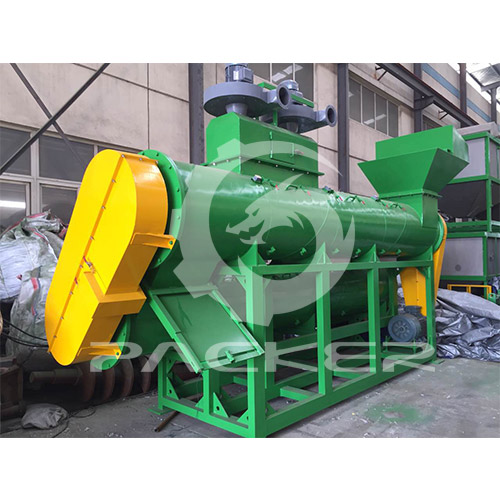How Does a Waste Plastic Washing Line Revolutionize Recycling?
2024-12-11
As the world grapples with the mounting problem of plastic waste, recycling has become a critical solution. Among the technologies driving progress in this field is the waste plastic washing line. But how exactly does it transform the recycling process, and why is it so indispensable?
1. What Is a Waste Plastic Washing Line?
A waste plastic washing line is a series of interconnected machines designed to clean, separate, and prepare plastic waste for recycling. It is essential for ensuring that recycled plastics meet the high-quality standards needed for reuse in manufacturing.
2. How Does It Work?
The process typically begins with shredding or crushing plastic waste into smaller pieces. These fragments then pass through washing stations that remove dirt, oil, and other contaminants. Advanced systems may also include flotation tanks and centrifuges to separate plastics by type and density. Finally, the cleaned plastic is dried and ready for further recycling steps, such as extrusion or pelletizing.
3. Why Is Cleaning So Important?
Contaminants like food residue, labels, and adhesives can compromise the quality of recycled plastic. A waste plastic washing line ensures thorough cleaning, enabling the production of high-grade recycled materials. This step is vital for industries like packaging and textiles, which demand consistent quality.
4. What Types of Plastics Can Be Processed?
Waste plastic washing lines are versatile, capable of handling a wide variety of plastics, including PET, HDPE, LDPE, and PP. Specialized configurations can cater to specific waste streams, such as post-consumer bottles, industrial film, or agricultural plastic.
5. How Does It Promote Sustainability?
By enabling the efficient recycling of plastic waste, washing lines reduce the need for virgin plastic production, which is resource-intensive and environmentally damaging. This contributes to a circular economy, where materials are reused rather than discarded.
6. Is It Cost-Effective for Businesses?
Investing in a waste plastic washing line can lead to significant cost savings in the long run. Recycled plastics are often cheaper than virgin materials, and businesses can benefit from government incentives for sustainable practices. Additionally, reducing plastic waste minimizes disposal costs.
7. What Innovations Are Improving Washing Lines?
Technological advancements are making waste plastic washing lines more efficient and environmentally friendly. Features like water recycling systems, energy-efficient motors, and automated sorting technologies are reducing operational costs and environmental impact.
8. How Does It Address Global Plastic Waste Challenges?
The adoption of waste plastic washing lines on a larger scale can significantly reduce the amount of plastic waste ending up in landfills and oceans. By turning waste into a valuable resource, these systems play a critical role in combating pollution and conserving resources.
In essence, waste plastic washing lines are transforming the way we handle plastic waste, making recycling more efficient and impactful. By investing in and utilizing this technology, industries and governments can take meaningful steps toward a cleaner and more sustainable future.



